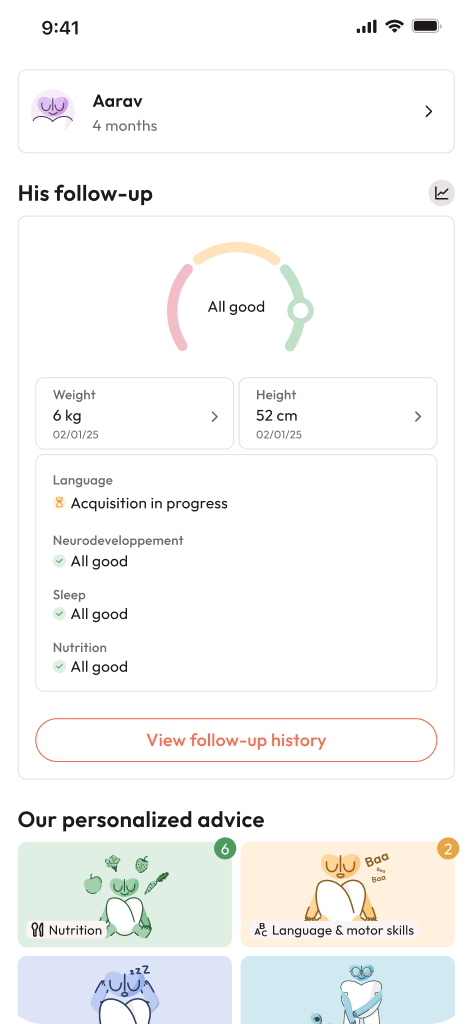Pelvic pain during pregnancy can feel like an unexpected guest—sometimes a subtle reminder, other times an obstinate presence that invites questions, worry, and occasionally, frustration. Parents often find themselves navigating not just physical sensations but also the cascade of concerns that accompany these changes: Will this pain stop me from walking normally? Is something happening to the baby? Can I sleep through the night uninterrupted? The core challenge emerges: deciphering which aches require simple measures and which demand urgent attention. Here, the focus is on medical clarity, reassurance, and practical wisdom—a toolkit for parents who wish to understand, anticipate, and manage pelvic pain during pregnancy with both confidence and care. From the hormonal symphony to the mechanical choreography of a growing uterus, every detail matters when it comes to your wellbeing and that of your unborn child.
What Is Pelvic Pain During Pregnancy?
What does pelvic pain during pregnancy actually mean? Imagine a spectrum stretching from a gentle pull in the lower abdomen, sometimes barely there, to a sudden, sharp twinge radiating toward the hips, lower back, or groin. Everyday moments—climbing stairs, standing on one leg, getting out of bed—amplify these sensations, making basic movements feel like small hurdles. Why this unpredictability? As your body prepares for birth, relaxin and progesterone steadily soften your pelvic ligaments; muscles adapt, and joints become more flexible, yet less stable. For 80% of pregnant women, some type of pelvic pain or discomfort surfaces, particularly after the second trimester begins. Whether it’s a dull throb, short stabbing pain, or a heaviness that lingers, these sensations speak the language of adaptation and transformation—a natural, if not always comfortable, part of pregnancy’s journey.
Why Understanding Pelvic Pain Matters for Parents
You may wonder: Is this discomfort something I should worry about? Recognising the difference between harmless, adaptive pain and warning signs is empowering. Understanding the source of pelvic pain during pregnancy fosters calm, facilitates communication with doctors, and helps avoid unnecessary stress. Even more, having reliable information enables proactive steps—lifestyle tweaks, gentle exercises, or support from specialists—all crucial for maintaining both your physical comfort and emotional peace of mind. Medical science demonstrates: Early recognition and informed management make a profound difference, not only in preventing unnecessary complications but in fostering a confident, balanced approach to pregnancy.
How Common Is Pelvic Pain During Pregnancy?
Pelvic pain during pregnancy finds its way into the daily lives of many. It ranges from mild, occasional discomfort to persistent aches affecting mobility, with noticeable peaks from week 14 to week 30. While some women experience relief soon after birth, a smaller number will find the discomfort lingers for some weeks or even months. Notably, even when pain persists, most experience a normal and safe delivery—thanks to timely, appropriate care and practical strategies.
Causes of Pelvic Pain During Pregnancy
Hormonal Changes: Relaxin and Progesterone
From the earliest stages, your body orchestrates nuanced hormonal changes. Relaxin and progesterone top the list—responsible for the softening of joints and ligaments. Prepared for childbirth? Absolutely. Stable? Not always. This new flexibility, essential for delivering a baby, comes with a trade-off: less joint stability and, thus, a higher tendency towards pain and discomfort, particularly with routine activities such as walking or changing posture.
Mechanical Forces: Weight Gain and Posture Shifts
With the uterus expanding, your centre of gravity shifts. The result? More pressure on the pelvic joints and muscles, and changes in posture that can make ordinary moments—turning, rising, or just standing—unexpectedly uncomfortable. Ligaments, especially the round ligament, stretch and sometimes protest with short, sharp pain, especially during sudden movement.
Specific Conditions: Pelvic Girdle Pain (PGP), Symphysis Pubis Dysfunction (SPD), and Round Ligament Pain
If you hear the phrase pelvic girdle pain, think about instability in the very joints that allow your pelvis to move and flex. Symphysis pubis dysfunction (SPD) emerges when these joints move unequally, creating sharp or grinding sensations. And round ligament pain feels like a tug or jolt, notably during a quick change in posture or getting out of bed.
Other Contributors: Uterine Contractions, Digestive and Urinary Issues
Sometimes, the cause isn’t mechanical at all. Gentle uterine contractions—often Braxton Hicks—may cause brief, irregular pain that rests away with time. Meanwhile, digestive slowdown (leading to constipation) or urinary issues such as a urinary tract infection (UTI) can manifest as pelvic pain, adding another layer to the puzzle.
Rare but Serious Causes
Not to be overlooked: urgent conditions like ectopic pregnancy (where the embryo implants outside the uterus), miscarriage, or adnexal torsion (twisting of the ovaries or tubes), each capable of producing sudden, severe pain and additional signs like bleeding or fever. These situations require prompt, expert intervention.
Recognising Pelvic Pain: Symptoms and Patterns
Typical Locations and Sensations
Where can you expect pelvic pain during pregnancy to appear? The front of the pelvis, lower back, groin, hips, or even radiating to the thighs—all possible. Descriptions vary: a burning, throbbing, or stabbing pain; sometimes a dull ache, other times a peculiar heaviness or grinding.
When Does It Hurt Most?
Triggers abound: A casual walk across uneven ground, a single step upstairs, or simply moving from bed to chair may intensify pain. Extended periods in a fixed position, or even minor posture shifts, often ring alarm bells.
Red Flags: When To Act
Not all pelvic pain during pregnancy can simply be brushed aside. Contact your doctor promptly if:
- The pain is sudden or relentless, unaffected by rest
- You notice vaginal bleeding
- Fever, chills, unusual sweating, or general malaise develop
- Pain accompanies urinary symptoms: burning, frequent trips, cloudy or pungent urine
- There is pain spreading to the back or limbs, or combined with dizziness or severe nausea
Thorough description of the pain—duration, location, triggers—greatly helps with rapid assessment by your medical team.
Risk Factors: Who Is More Vulnerable?
Previous Injuries or Multiple Pregnancies
Parents with a history of lower back or pelvic pain, physical injuries, or those carrying twins or more face higher odds. Past injuries may reduce pelvic strength, making adaptation more strenuous as pregnancy progresses.
Physical Characteristics: BMI and Hypermobility
A higher body mass index (BMI) increases joint loads. If you have joint hypermobility (natural ligament looseness), you may find your pelvic structures even more vulnerable to stretching and pain.
Personal and Medical Background
Older maternal age, smoking, anatomical variation in the uterus, or a past history of infection also weigh in—potentially hindering tissue recovery and altering pelvic mechanics.
How Doctors Diagnose Pelvic Pain During Pregnancy
Clinical Evaluation
Diagnosis begins with a clear discussion about your medical background—what pain feels like, when it began, where it spreads, and what eases or worsens it. This is followed by a physical exam, focusing on the pelvis and abdomen, checking for tenderness, swelling, or unusual joint movement.
Safe Diagnostic Imaging
Generally, pelvic ultrasound is the preferred tool—offering detailed views of the uterus, ovaries, and surrounding organs. It quickly clarifies whether pain stems from an obstetric issue or an unrelated source. In select cases, an MRI is an option, safely performed during pregnancy if other causes (like ovarian torsion) are suspected. X-rays remain strictly limited to exceptional cases.
Differential Assessment
Doctors focus on separating musculoskeletal pain, a natural result of adaptation, from more serious threats like infections or obstetric emergencies. Detailed examination, laboratory tests, and imaging are the cornerstones here.
Managing and Relieving Pelvic Pain: Practical Strategies
Lifestyle Adjustments
- Plan each day in digestible steps; schedule rest between activities
- Sleep on your left side with a firm pillow separating your knees; this relieves pressure and supports healthy circulation
- Skip heavy lifting; if unavoidable, bend your knees, keep your back straight, and avoid twisting
- Choose shoes with cushioning and strong arch support—ditch the heels for a while
- Use ergonomic aids: supportive chairs, maternity belts, or pillows open new avenues to comfort, making everyday motions easier
Exercise and Physical Therapy
Engage in gentle movement: walks, stretches, prenatal yoga, or Kegel exercises (these strengthen your pelvic floor). Seek help from a trained physical therapist—personalized exercises increase stability and reduce pain episodes. Strengthening key muscle groups adds a new layer of protection for your pelvis, decreasing day-to-day discomfort.
Pain Relief: Medical and Complementary Therapies
- Acetaminophen (paracetamol) stands as first-line in pain relief, but medical advice is always prerequisite
- Try heat therapy (warm packs, baths) to soothe tense muscles
- Explore safe alternatives—osteopathy, chiropractic care, or acupuncture—under professional guidance
- Use aids: maternity support belts or sitting on a firm pillow can offer surprising relief
Caution: Steer clear of over-the-counter medication without supervision, as not all drugs suit pregnancy, and clear diagnosis comes first.
Prevention: Early Care Makes a Difference
- Adopt a healthy, balanced lifestyle—mixing light activity and quality sleep
- Prioritise prenatal exercise: swimming, walking, stretching, and muscular strengthening all reinforce pelvic structures
- Stay vigilant about posture; adjust physical activity to reflect how you feel, never hesitate to pause
Simple changes—implemented early—buffer the impact of pelvic pain during pregnancy, supporting a smoother experience for both you and your baby.
Pelvic Pain and Childbirth: Practical Insights
Labour and Positioning
What happens when contractions begin? Position matters. Being upright, kneeling, reclining with support, or lying on your side can decrease pelvic strain. For some, a water birth offers remarkable relief—the buoyancy supports your joints and encourages relaxation. A birthing ball can become an unexpected ally, supporting the pelvis at a delicate time.
Pain Relief During Labour
Have candid discussions about pain relief, with both natural and medical options on the table—breathing, massage, relaxation or, if necessary, epidural anesthesia. Remember, needs change rapidly; flexibility in pain management empowers you to respond appropriately as labour evolves.
The Emotional Landscape: When Pain Shapes Your Mood
Emotional Consequences
Ongoing pain doesn’t just disrupt sleep or independence; it can affect mood, sap energy, or trigger doubts. Fluctuations between frustration, sadness, and anxiety arise, especially on difficult days, and are entirely understandable. It’s important to acknowledge these shifts with compassion—there is no single right reaction.
Support Networks
If pain persists, reach out—talk to your healthcare provider about referral opportunities, physiotherapy, or more targeted care. Community support—whether through local networks or online forums—can provide affirmation and advice. Maternal health programmes, group sessions, or counselling open additional doors, equipping parents with both strategies and reassurance as they face each stage.
Coping Strategies for Daily Life
Adjusting Routines
Bit by bit, adapt chores and routines; weave in regular rest periods, use comfort aids (belts, shoes, pillows), and celebrate simple victories—walking an extra step, sleeping better, or managing pain one day at a time.
Help Without Guilt
Ask for help—whether from your partner, family, or friends. Sharing the load makes room for recovery and fuels resilience, protecting parental health through fluctuating demands.
Key Takeaways
- Pelvic pain during pregnancy shows up in many ways—mild to severe, fleeting to persistent—stemming from factors like hormones, weight changes, posture, and sometimes digestive or urinary challenges.
- Accurate, timely medical assessment distinguishes adaptive pain from genuine emergencies requiring prompt intervention.
- Relief lies in smart lifestyle shifts, tailored exercise, supportive devices, and carefully chosen therapies—prevention is as important as treatment.
- Clear red flag awareness empowers informed decisions; timely action encourages optimal outcomes for both parent and baby.
- Collaborative care, involving specialists (obstetrician, midwife, general practitioner), ensures your journey remains as safe and individualised as possible.
- Emotional wellbeing counts—reach out for practical help and guidance; resources and professionals stand ready to support.
- For more tips, personalised guidance, and free child health questionnaires, download the application Heloa.
Questions Parents Ask
Why does pelvic pain tend to get worse at night during pregnancy?
A pattern noticed by many parents—a rise in discomfort towards evening or while trying to rest. What’s behind it? Fatigue in muscles and ligaments after a day’s effort, changes in sleeping position, and continual weight from the growing baby all converge after sunset. Muscles tire; pain sharpens. A firm pillow between the knees, or an alternative sleeping position, can lend support. Night pain remains, for most, a common but manageable aspect of pregnancy.
Are there safe ways to relieve pelvic pain at home during pregnancy?
Certainly! Parents frequently discover comfort with warm baths, heating pads (on low), or pelvic support belts for added stability. Gentle stretches, attention to posture, and timely rest all help distribute strain, making movement easier and less painful. If a remedy feels right and brings improvement, it can safely feature in daily routines. For new remedies or persistent problems, consult your healthcare professional for tailored advice.
When should you worry about pelvic pain during pregnancy?
Most pelvic pain during pregnancy signals healthy adaptation, but specific signs demand extra care. If pain is severe, constant, worsening, or accompanied by bleeding, fever, chills, or burning during urination—do not wait. Quick consultation is best for both reassurance and safety. If uncertain, always choose caution and seek a healthcare professional’s advice.
Further reading:









